In 2017, the YouFab Global Creative Awards, a global award sponsored by FabCafe, received 227 entries from 26 countries, with 20 works receiving awards. Prize categories include a special prize where a sponsor calls for works on a unique theme. This year, Lion Corporation (hereafter Lion) is taking part in our special price. Known as the Lion Award, this prize takes the theme of MERGE – A future where work and life merge together. The award is accepting applications until October 31st.
Imagine a society where the seams of different boundaries, such as public and private, digital and the real, merged together—what would such a society be like? What kind of experiences would people desire? How would they spend their days? These kinds of questions took center stage at a talk event on the theme “Thinking speculatively—The future that’s just ahead of us, where work and life merge together” (October 8th at FabCafe MTRL).
Guest speakers were Lion Innovation Lab’s Mr. Shohei Fujimura who established the award, together with visual artist Ai Hasegawa. A variety of discussions were had with participants about life and work in the future.
Text by Reona Takenaka
REPORTS
Event report on the Speculative Workshop/Thinking about a merged future with Ai Hasegawa
Nov.17, 2025
By YouFab Global Awards 2018 Executive Committee
Questioning the meaning and value of work to get ideas for the next-generation
First up, Fujimura explained the history of Lion, which is celebrating 127 years in business, together with the background of the the Lion Award. “Since the early 20th century, Lion has been in the business of manufacturing products like toothbrushes and detergents. Working with the technology and perspectives, we has grown since that time. Lion is still working to increase its value as a company by being closely connected with people’s lives.”

People’s lives, however, change with the passage of time. Fujimura pointed out that this implies the high possibility that things we already have will be superseded by new ideas.
“There’s an American crowdfunding site that has a mouthpiece-type toothbrush that brushes your teeth by vibrating. With a stick-and-bristles kind of toothbrush, you need to brush each tooth one by one. But this mouthpiece-type toothbrush will clean your teeth just by popping it in your mouth. The generally accepted opinion used to be that people spend 3 minutes brushing their teeth, but this new process would take between 10 and 30 seconds. What’s more, if you have to choose between “30 seconds done automatically” and “3 minutes moving your hands,” it’s only natural that you would choose the former.”
With the changing times and the development of technology, we may have a future where our company’s main product disappears. Confronted with this problem of “how we create value,” we decided to run the YouFab project in order to take a look at what’s coming in the future.
“Right now, we are questioning the meaning and the value of an individual working. The physical and mental distance with work is changing—can we find some ideas for next-generation living? As we think about how our way of working might change, we expect that the new realm being aimed for by Lion will emerge.”
Things that are unlikely are what is going to change the world
Following on, artist Ai Hasegawa presented her activities and artworks. She explained her academic background: having studied media art at International Academy of Media Arts and Sciences (commonly known as IAMAS) before going on to study at the Royal College of Art (RCA), she then went on to become a researcher at MIT Media Lab in Boston. Her experiences at RCA had a particularly strong impact on her life.

“When trying to visualize the future, I think that many of us imagine a desirable future. But there is actually a lot of scope for what the future might be like. For example, I expect it was thought more or less impossible that Donald Trump could take office as president, but this actually came to be. The age we live in is full of change; it’s difficult to predict. Just as the word “black swan”(*) suggests, “things that we had not noticed but that were there all along (things that can be explained as a postscript)” are the things that are going to change the world. I feel that the Design and Interactions facility at RCA values not only projects that explore a future that is desirable or likely to occur, but also projects that nudge at this blind spot, the black swan.”
(*) Black swan……When extraordinary things that had been thought to be impossible actually occur, they have a powerful, unpredictable impact. This can be explained as a postscript later. The term is frequently used to talk about financial crises or natural disasters.

Hasegawa’s representative work “I wanna deliver a dolphin…” was created to pose the question: “What would it be like if, as a surrogate mother, we gave birth to endangered animals that are hunted for food? Facing a future which is expected to have a food crisis due to overpopulation, we may have opportunities to rethink the issue of the ethics of giving birth to “humans” and to the eating of animals, due to the feelings of love and intimacy that arise from giving birth to such an animal oneself. The work raises issues from this kind of perspective.”
Hasegawa realistically produces a scenario that seems highly unlikely in real life and presents this question to the viewers of the work. This way of thinking that is speculative design—design that works to think about questions as reality—may be a major key in awards such as the Lion Award.
Thinking about the world in 2030

After the conclusion of the session for guest speakers, the event moved on to group work, with a focus on the participants. Topics for the group work were:
Q1. Where, with whom, and how will you live and work in 2030?
Q2. What kinds of problems do you think will arise for you?
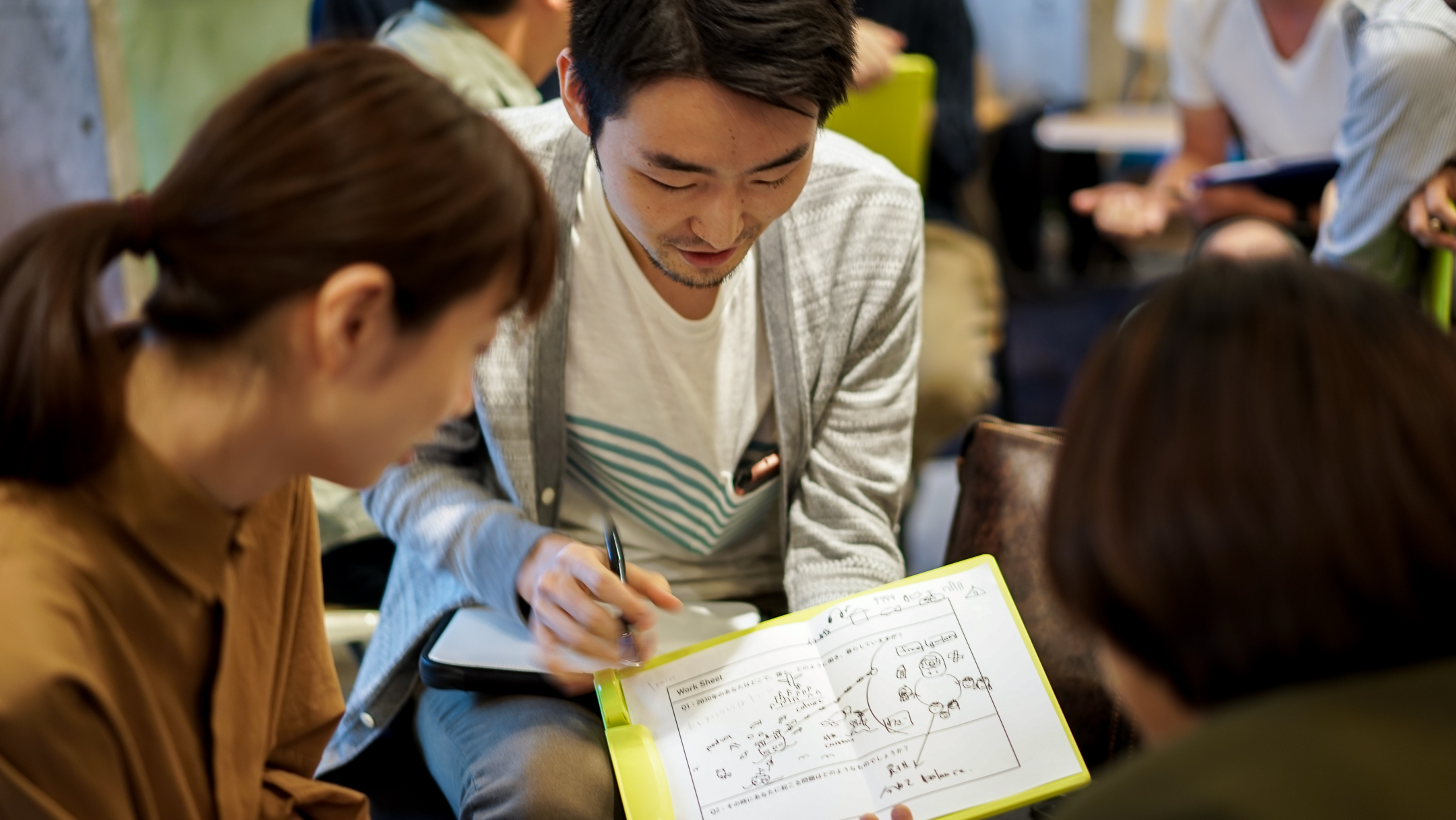
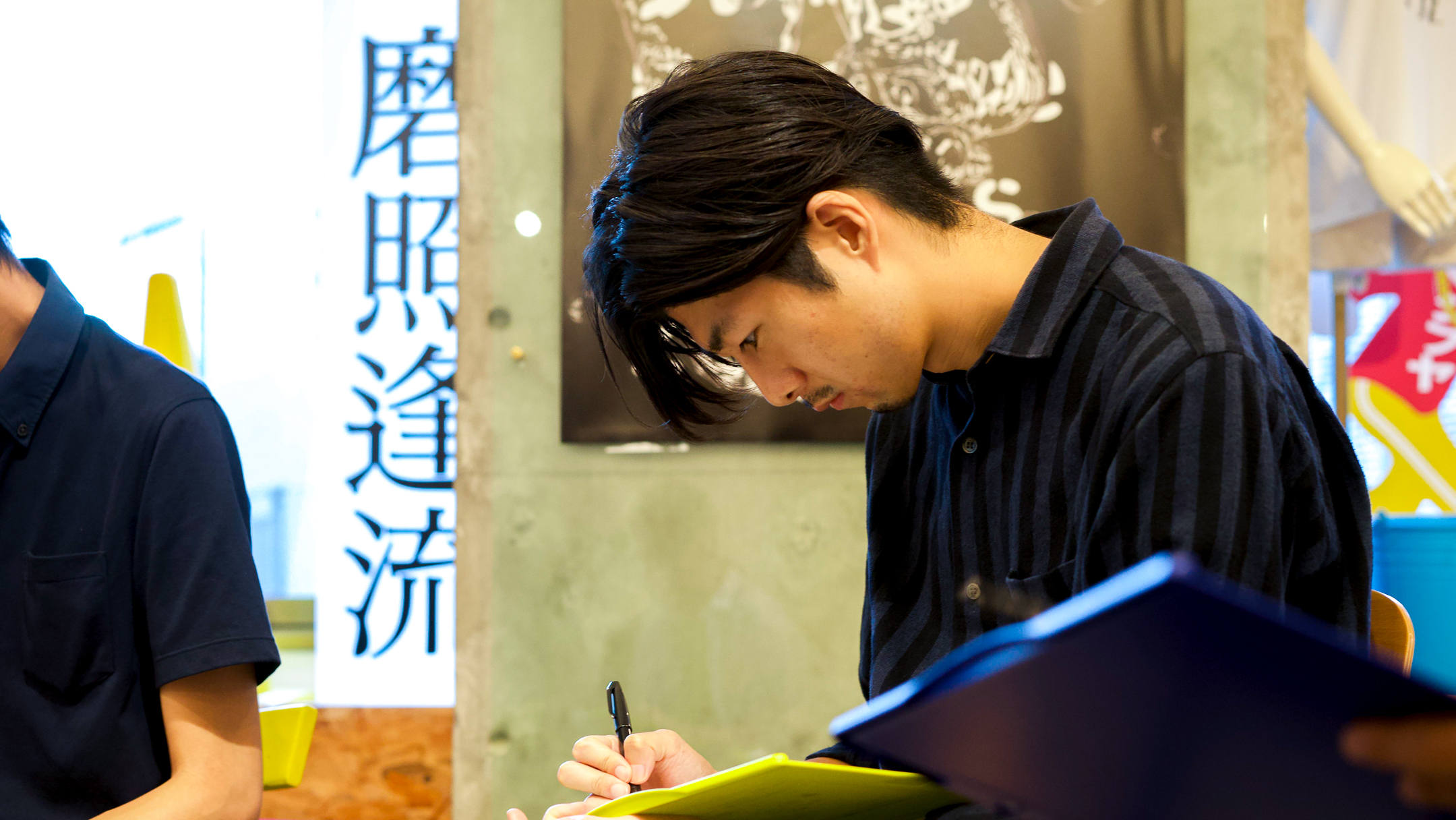
Unique comments came up in each of the groups, including things like:
“We would not stick to any one place, but would use a drone and move, as a family, to places that we like and live there,” and “I would invite aliens to the art festival that I run in regional Japan and get them to teach us technology that we do not know about. We’d get new awareness from them.”
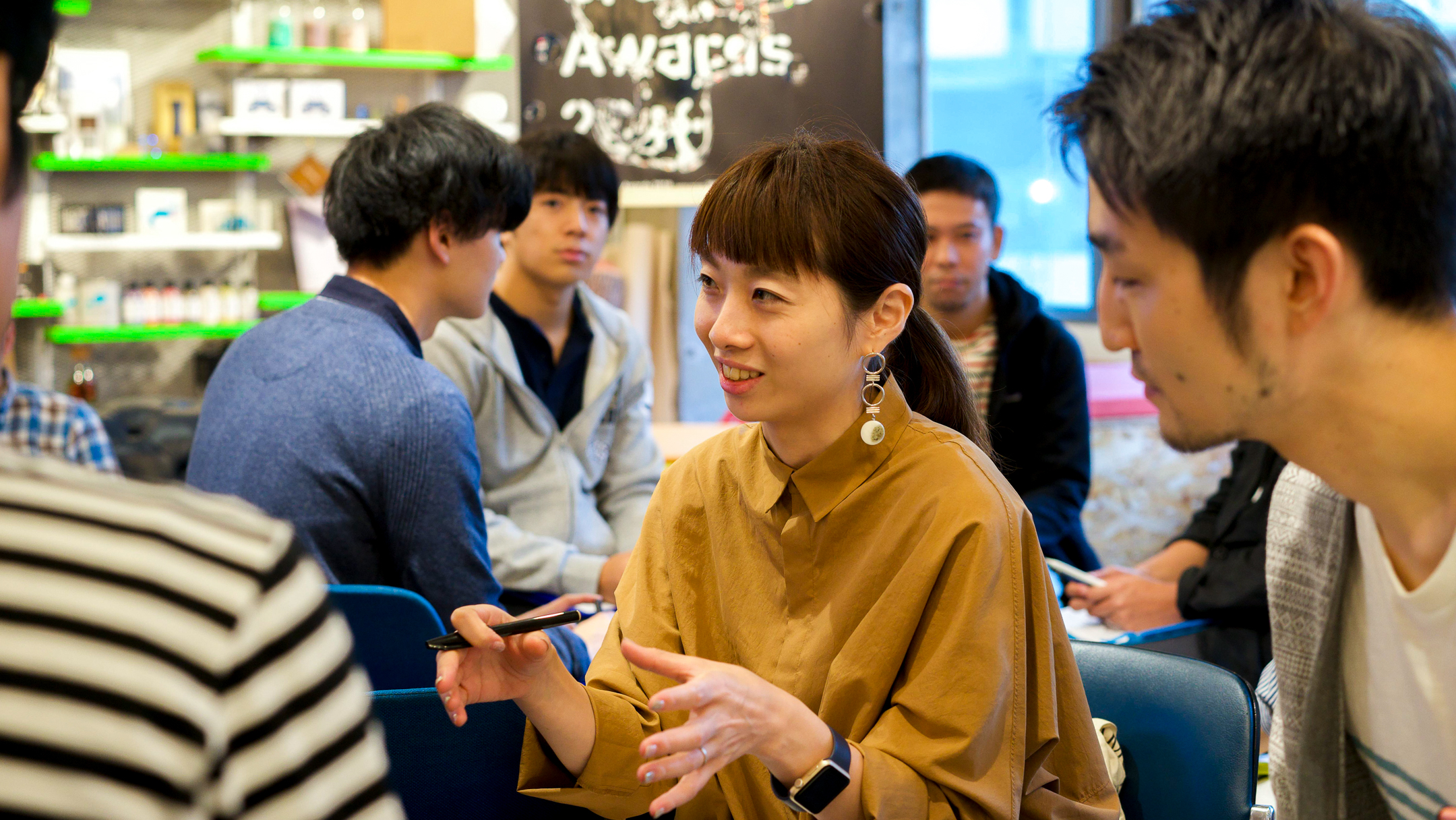
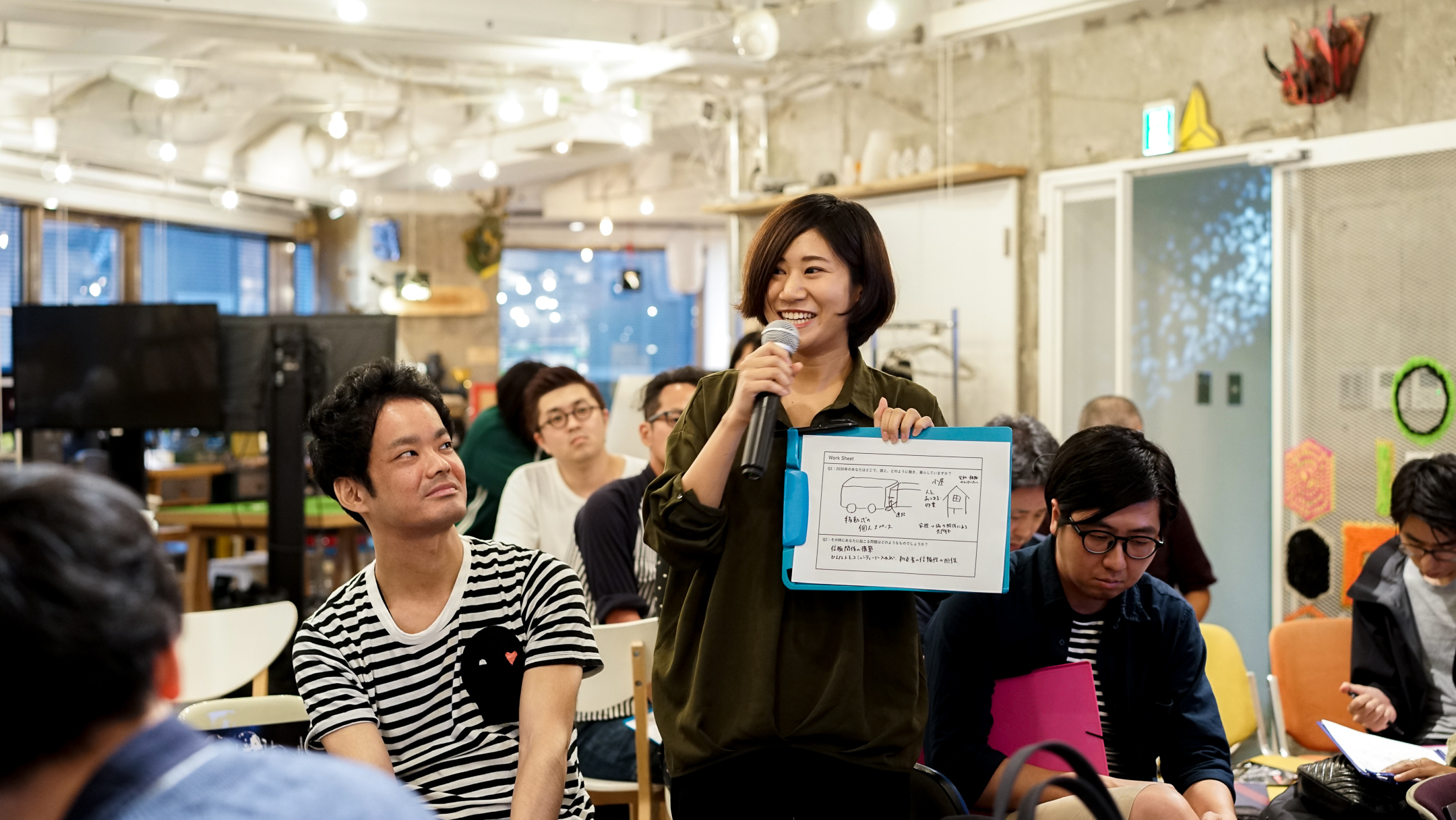
After the group work, the event went on to Fujimura and Hasegawa reviewing these future vistas. About the opinion: Various problems arise as civilization over-develops, and as a countermeasure to this, we will have a society where each small community will come to be monitored,” Fujimori commented: “In China, monitoring is very thorough. It’s the kind of place where numerical evaluations are made and these communities get abandoned at a single stroke. But in 10 years’ time, the world created by the young people who grew up there might end up being a quite interesting one.“
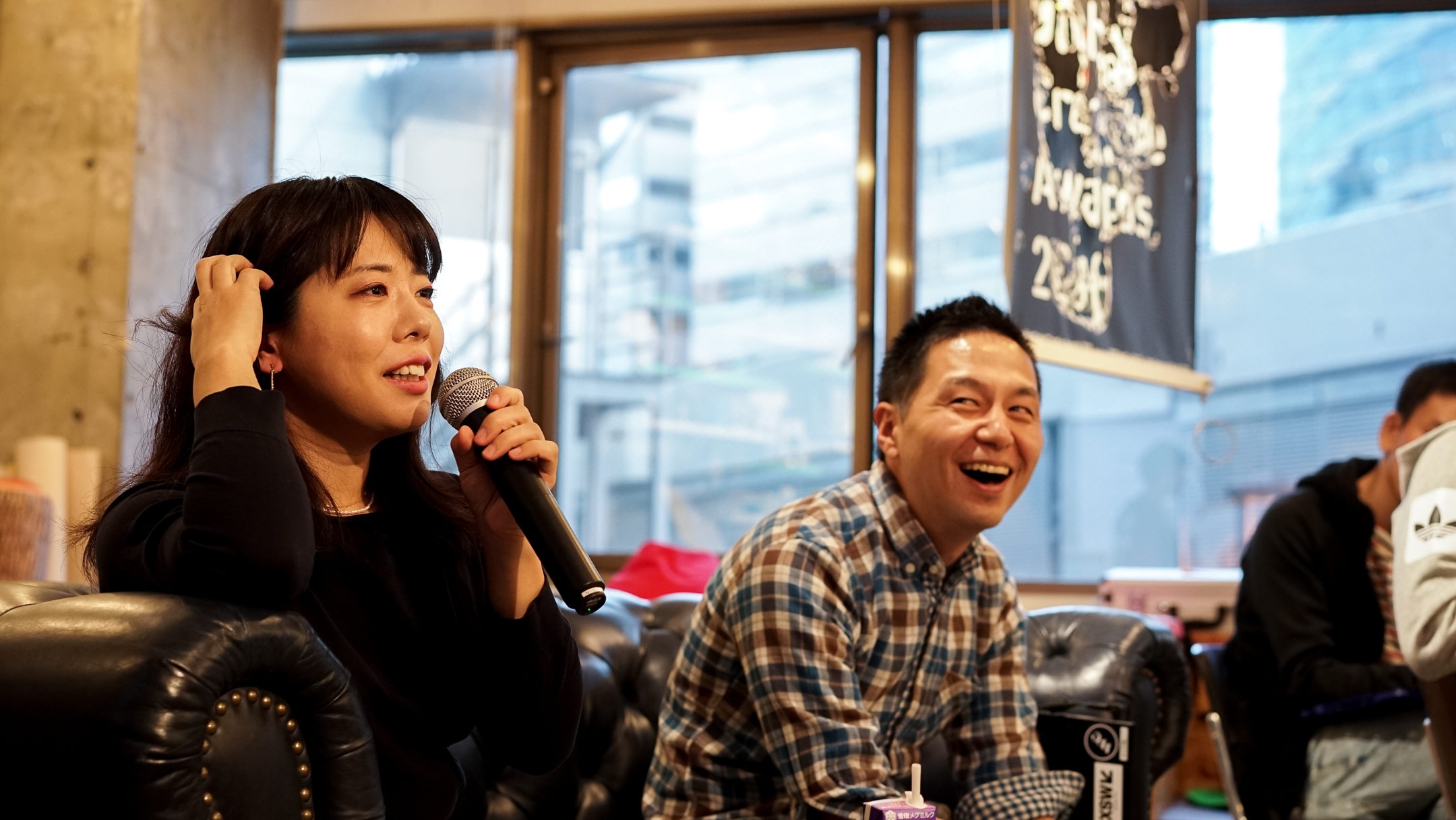
“I feel that this might also mean a return to the wild. It might be interesting visually too. There’s a science fiction novel called Brave New World that was written about 1930 or so. It represents a highly managed world. If you feel depressed, you take a happy-pill called SOMA. But there are also people who want to escape from this world, and they return to the forest. It feels like the continuation of this story. Those on the management side in this world want to manage everything. I also felt it might be interesting to think about them managing even more,” commented Hasegawa.
We live in a world where it is now possible to bring into reality things that would not have been easily possible with the standard way of thinking that we have had in the past. This is why we can argue that we require the creation of new value based on postulations about working, living, and different forms that the future might take.

The deadline for the special Lion Award is October 31st. What exactly would the new form of daily life be like in 2030, when work and living have merged together? We invite you to explore this question by putting in an application for a work that expresses your thought on the form that this MERGE will take!




